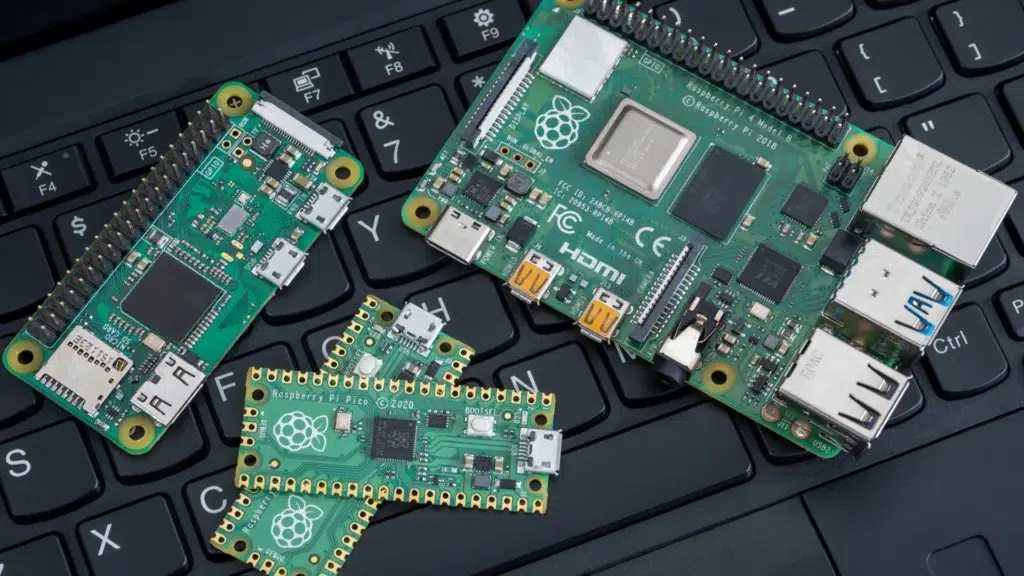- Using a Raspberry Pi as a NAS is a cost-effective and low-power option.
- Installing Raspberry Pi OS Lite optimizes performance without the need for a graphical interface.
- Samba allows file sharing on the local network with access from any device.
- With the correct configuration, the NAS can be managed remotely via SSH.

Do you want to have a network storage server without spending a fortune? La Raspberry Pi It is one of the best options. Thanks to its versatility and the ability to connect external hard drives, you can Turn a Raspberry Pi into a homemade NAS serverEasy to set up and with very low energy consumption.
While commercial NAS systems offer advanced features out of the box, they often come at a high price. However, with a Raspberry Pi, you can achieve similar results with minimal investment. In this article, we'll explain. What materials you need and what software you can use to do it in a simple and effective way.
Why use a Raspberry Pi as a NAS?
NAS servers (Network Attached Storage) are devices designed to offer network storage which can be accessed from different devices within the same local network or even from the cloud. Using a Raspberry Pi as a NAS offers several advantages:
- It is a more economical option: A Raspberry Pi costs much less than a commercial NAS.
- Provides low energy consumption: By consuming just a few watts, it can be powered 24/7 without significantly increasing your electricity bill.
- It is highly customizable: You can install different additional applications and services according to your needs.
- Allows remote accessibility: Configuring it correctly allows you to access files from anywhere.
However, when converting a Raspberry Pi into a NAS server, you must take into account some limitations. The Raspberry Pi does not have the same processing power as a professional NAS, and its network connection It can be a bottleneck if you don't use a model with a Gigabit Ethernet port. Additionally, if you need large amounts of storage, you'll need to use external USB hard drives.
In this article you can read more about What is a NAS server? to better understand its characteristics.

Materials needed
Before you start converting a Raspberry Pi into a NAS server, make sure you have the following components:
- A Raspberry Pi 4 o Raspberry Pi 5 (4GB or 8GB RAM version recommended).
- A microSD card of at least 8 GB where we will install the operating system.
- Power adapter compatible with the Raspberry Pi.
- Un USB external hard drive or high-capacity pendrives to store files.
- Un Ethernet network cable (optional, but highly recommended for added stability).
- A PC with Windows, macOS or Linux to perform initial configuration.
Installing the operating system on the Raspberry Pi
Once the requirements have been verified, we can begin the process of converting a Raspberry Pi into a NAS server. The first thing to do is install a lightweight operating system on the Raspberry Pi. The best option for this project is Raspberry Pi OS Lite. Since this OS doesn't include a graphical environment, performance is optimized. Here are the steps to follow:
Step 1: Download and install Raspberry Pi Imager, an official tool that will allow you to flash the operating system to the microSD card.
Step 2: Insert the microSD into your PC and open Raspberry Pi Imager. Select Raspberry Pi OS Lite (64-bit if your Pi supports it) and choose the memory card as the destination.
Step 3: Before recording the image, access the advanced options and configure:
- The hostname of the Raspberry Pi (for example, raspberrypi.local).
- The username and password.
- Wi-Fi connection (if you don't use Ethernet).
- Enable SSH for remote connection.
Step 4: Flash the image and, once the process is complete, insert the microSD card into the Raspberry Pi and power it on.
Since we've enabled SSH in the settings, we can manage the Raspberry Pi without having to connect a monitor and keyboard. From Windows, use PuTTY; on macOS and Linux, simply open the terminal and type:
ssh user@raspberry_ip
Enter the password and you'll be logged in to begin setup.

Configure the external hard drive
Another necessary step to turn a Raspberry Pi into a home NAS server is to install a USB hard drive as the NAS's primary storage and grant it the appropriate permissions.
First you need to check what name the system has assigned to the disk with the following command:
lsblk
If the disk is not formatted, you can format it ext4 with:
sudo mkfs.ext4 /dev/sda1
Then mount the disk to an accessible directory:
sudo mkdir /mnt/nas
sudo mount /dev/sda1 /mnt/nas
To ensure that the disk is automatically mounted upon system reboot, edit the file /etc/fstab with:
sudo nano /etc/fstab
And add the following line at the end:
/dev/sda1 /mnt/nas ext4 defaults 0 2
Install and configure Samba
To share files over the network, we will install Samba, a software that enables communication between Windows and Linux systems.
sudo apt update && sudo apt install -y samba
Now edit your configuration file:
sudo nano /etc/samba/smb.conf
Add at the end:
[NAS]
path = /mnt/nas
writable = yes
create mask = 0777
directory mask = 0777
public = no
Save the changes and restart the service:
sudo systemctl restart smbd
Access the NAS from Windows or macOS
After turning a Raspberry Pi into a NAS server, here's what you need to do to access shared files:
- On Windows Open File Explorer and type in the address bar: \\raspberry_ip\NAS
- On macOS, open Finder and press Cmd + K, then type: smb://raspberry_ip/NAS
Finally, enter the username and password you previously configured and you'll be able to manage files from any computer.
As we have seen in this article, by following the steps carefully, it is possible to turn a Raspberry Pi into a homemade NAS server. interesting solution to store and share files without spending a lot of money.
Editor specialized in technology and internet issues with more than ten years of experience in different digital media. I have worked as an editor and content creator for e-commerce, communication, online marketing and advertising companies. I have also written on economics, finance and other sectors websites. My work is also my passion. Now, through my articles in Tecnobits, I try to explore all the news and new opportunities that the world of technology offers us every day to improve our lives.